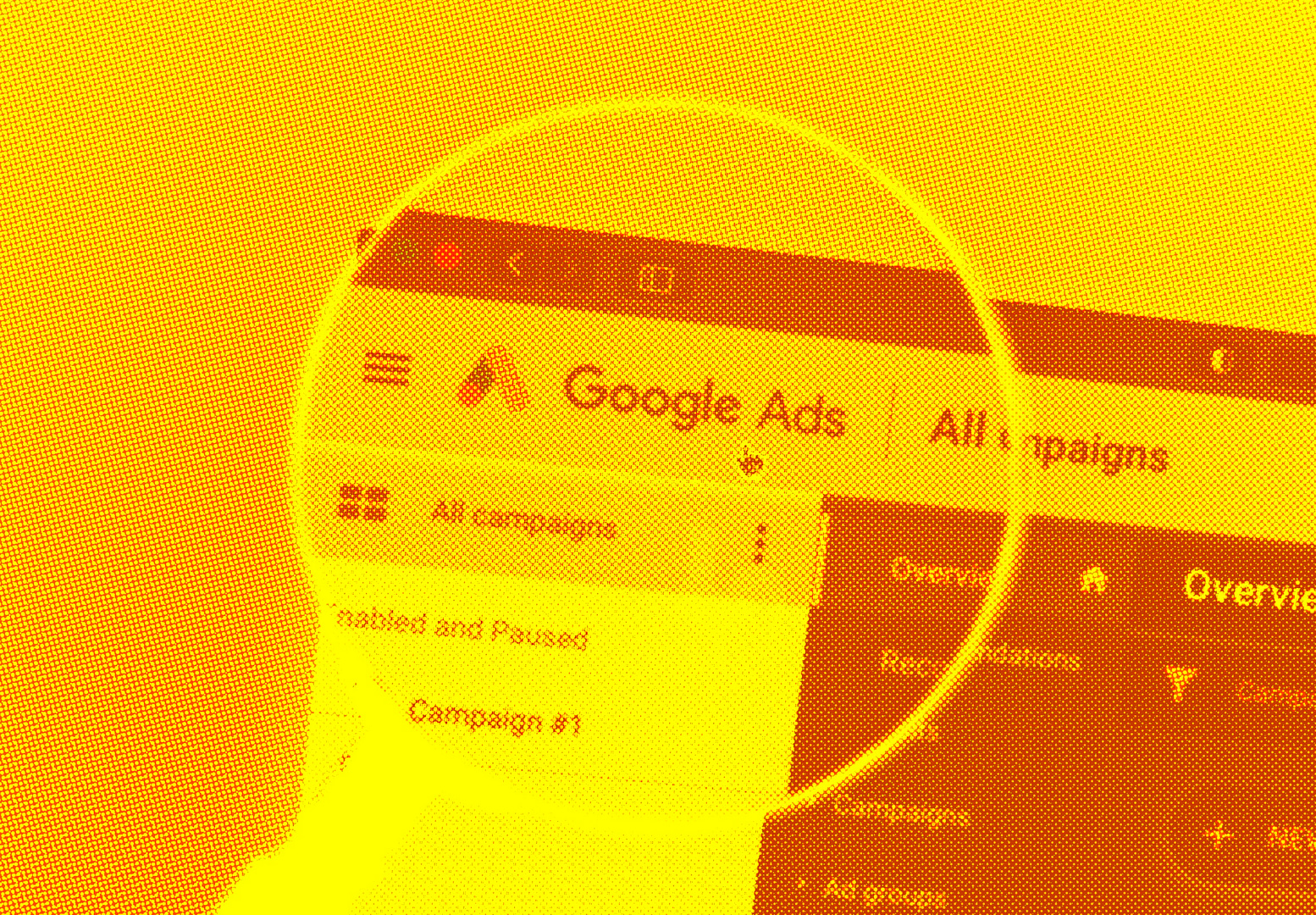We’ll walk you through the fundamentals of setting up and perfecting a successful Google Ads campaign in this article.
With the support of Google Ads, businesses may boost their online presence and attract relevant traffic to their websites. Businesses can build advertising with Google advertising that shows up on Google search results in pages, Google Maps, and other Google properties.
But designing and refining a Google Ads campaign can be difficult, especially for individuals who are unfamiliar with the system. We will walk you through the steps of developing and perfecting a successful Google Ads campaign in this article.
Understanding Google Ads
What are Google Ads?
Businesses can produce and display ads on Google and websites that it partners with using Google Ads, an online advertising platform. The pay-per-click (PPC) approach used by Google Ads implies that marketers only have to pay when a user clicks on their advertisement.
Why use Google Ads?
With billions of searches being made every day, Google is the most widely used search engine in the entire globe. With Google Ads, companies may connect with prospective clients who are actively looking for goods or services that are similar to their own.
Additionally, Google Ads provides a variety of targeting options, such as geographic targeting, demographic targeting, and device targeting, enabling companies to precisely target their ideal customers.
Setting up your Google Ads account
Creating your Google Ads account
Simply visit the Google Ads website and select the “Start Now” button to create a Google Ads account. After providing your email address and website address, you will be directed through the account creation procedure.
Setting up billing and payments
You must configure your account’s invoicing and payment details before you can start running advertisements. Payment choices for Google Ads include credit cards, debit cards, and bank transfer.
Creating a Campaign
Choosing the right campaign type
Based on your advertising objectives, you must select the appropriate campaign type when setting up a campaign. A variety of campaign kinds are available with Google Ads, including Search, Display, Video, Shopping, and App.
Setting up ad groups
You must create ad groups after deciding on your campaign type. Ad groups are advertisements that focus on a particular theme or set of keywords. You can make sure that your ads are pertinent to the keywords you are targeting and that your money is being used effectively by grouping your ads into ad groups.
Creating ads
You must first build your advertising before setting up your ad groups. Your ad should contain a call-to-action (CTA) that is obvious and encourages viewers to click on it. It should also be pertinent to the ad group you have created.
Keyword Research
Importance of keyword research
Finding the search terms and phrases your potential clients use to find goods and services that are comparable to yours is known as keyword research. A good Google Ads campaign must start with rigorous keyword research since it enables you to find the terms and phrases that are most pertinent to your company.
Keyword match types
Broad match, phrase match, and precise match are just a few of the different keyword match types available through Google Ads. Selecting the appropriate match type for your campaign is crucial because each match type has benefits and drawbacks.
Ad Optimization
Writing effective ad copy
A good Google Ads campaign requires writing persuasive ad copy. Your ad copy should be succinct, understandable, and persuasive, and it should have a clear CTA that entices consumers to click on it.
Ad extensions
Ad extensions are extra details that can be added to your adverts, such as contact information, connections to particular web pages, or extra text. Your advertising’ exposure, relevancy, and click-through rate (CTR) can all be improved using ad extensions.
Ad testing and optimization
The practice of developing various copies of your advertisement and comparing them to one another in order to determine which one is most effective is known as ad testing. You can boost the effectiveness of your campaign and get better results by consistently testing and optimising your ads.
Bid Strategies
Understanding bidding in Google Ads
Setting a maximum price for a click on your advertisement is the process of bidding. The ads that are displayed for a given search query are chosen using an auction mechanism by Google Ads, and the ad with the highest bid normally appears at the top of the search results page.
Different bidding strategies
The many bidding tactics available in Google Ads include target CPA bidding, automated bidding, and manual bidding. Each bidding technique has benefits and drawbacks, so picking the best one for your campaign is crucial.
Setting up bidding strategies
Go to your campaign settings and choose your desired bidding strategy to put up bidding strategy. The maximum bid can then be set, and Google Ads will automatically change your bids to help you get the outcomes you want.
Tracking and Analysis
Importance of tracking and analysis
The effectiveness of your campaign must be tracked and analysed in order to improve your advertising and get better results. You may find areas for improvement and make data-driven decisions to raise the effectiveness of your campaign by monitoring important metrics like click-through rate, conversion rate, and cost per conversion.
Setting up conversion tracking
Tracking particular user behaviours on your website, like making a purchase or filling out a form, is known as conversion tracking. Setting up conversion tracking is crucial for gauging the effectiveness of your campaign and pinpointing areas for development.
Analyzing campaign performance
You may track and evaluate the performance of your campaign using a variety of reporting and analytic tools provided by Google Ads. You may see trends and make data-driven changes to enhance your campaign’s performance by routinely examining the performance statistics.
Optimization Techniques
Campaign optimization tips
The following suggestions for campaign optimisation can help you raise the effectiveness of your Google Ads campaign:
- To make sure you are receiving the most for your money, constantly review and tweak your bids.
- To maintain your ads appealing and relevant, examine your ad wording frequently and alter it as necessary.
- Test out several ad types, such as video or image ads, to discover which is most effective for your company.
- Conduct tests on several landing pages to see which ones produce the highest conversion rates.
- To add more details and increase the visibility of your advertising, use ad extensions.
- If you want to reach users who have previously visited your website, think about implementing remarketing advertising.
- Use negative keywords to filter out irrelevant search terms and make sure that only users who are probably interested in your goods or services see your adverts.
- Review and analyse your campaign data frequently to find areas for development and to inform your actions in order to maximise the effectiveness of your campaign.
Conclusion
It can be difficult to create and optimise a high-performing Google Ads campaign, but if you use the advice and best practices provided in this article, your campaign will run more smoothly and produce better results. A good Google Ads campaign involves a number of processes, such as setting up your campaign, writing compelling ad copy, and analysing performance statistics. But with enough time and effort, you can design a strategy that attracts customers, produces leads, and ultimately aids in the expansion of your company.
FAQs
What is Google Ads?
Google Ads is an advertising platform developed by Google that allows businesses to display ads on Google’s search engine results pages.
How much does it cost to advertise on Google Ads?
The cost of advertising on Google Ads varies depending on a range of factors, including the competition for the keywords you are targeting and the quality of your ad copy. Google Ads uses a pay-per-click (PPC) pricing model, which means that you only pay when someone clicks on your ad.
How can I improve the click-through rate (CTR) of my Google Ads?
To improve your ad’s click-through rate, you can experiment with different ad formats and ad copy, use ad extensions to provide additional information and target specific keywords and audiences that are most likely to be interested in your products or services.
How can I track the performance of my Google Ads campaign?
Google Ads offers a range of reporting and analysis tools that allow you to track and analyze your campaign’s performance. By regularly reviewing your campaign data, you can identify areas for improvement and make data-driven decisions to optimize your campaign’s performance.
How long does it take to see results from a Google Ads campaign?
The amount of time it takes to see results from a Google Ads campaign varies depending on a range of factors, including the competition for the keywords you are targeting and the quality of your ad copy. However, by following best practices and continuously optimizing your campaign, you can start to see results within a few weeks or months.







